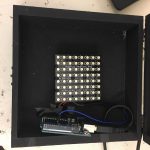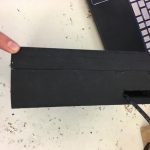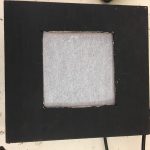A Multi-Colored LED that can Simulate a Fireplace
My project is an animated flame that can simulate a fireplace by lighting up through a diffuser screen.
Engineer
Carson E
Area of Interest
Computer Science
School
Basis Independent Brooklyn
Grade
Incoming Sophomore
Reflections
While I was at Bluestamp I learned about many things, how to be independent and look things up on my own, the basics of electrical and mechanical engineering, and so much more. After this camp, I can continue to build engineering projects at my home and at other camps. After Bluestamp, I will go into sophomore year at Basis independent Brooklyn where I can apply the engineering skills I got at Bluestamp to excel this year at school.
Final Milestone



My final milestone is putting the LED matrix and the Arduino in the black box and coding the Arduino to tell the LED matrix to look like a flame. The coding part was the easiest because of my previous programming experience in AP computer science. I knew how all the code worked and just had to understand what all the functions do. Then, I put the LED matrix and the Arduino in the Black box so light from the LED matrix would be blurry. For the LED matrix there is a value for all of the individual LEDs and I used these to control all the LEDs in a specific custom pattern. I also changed the color the LEDs by running a loop so where the color changes with the number of times the code is run. Overall this camp was very helpful for learning the different kinds of engineering and that just looking something up is normally the best way to solve a problem.
Code: https://docs.google.com/document/d/1RHjiV87sZBOndN5lKm4kAJGrCkekQxgFFI0L2R9_ouo/edit?usp=sharing



